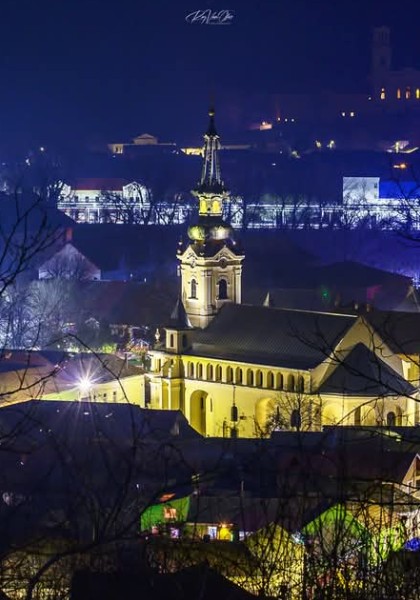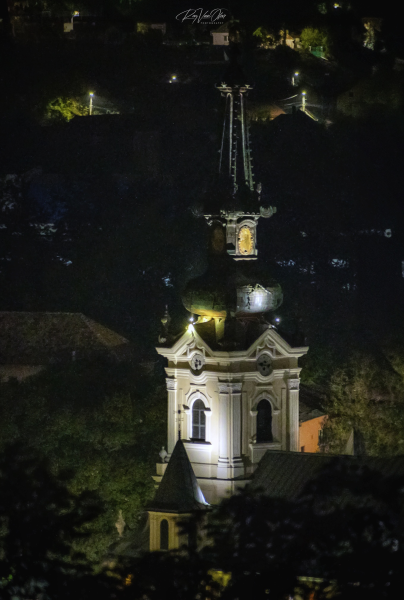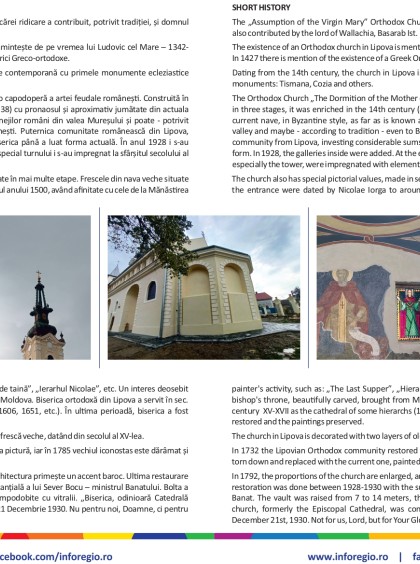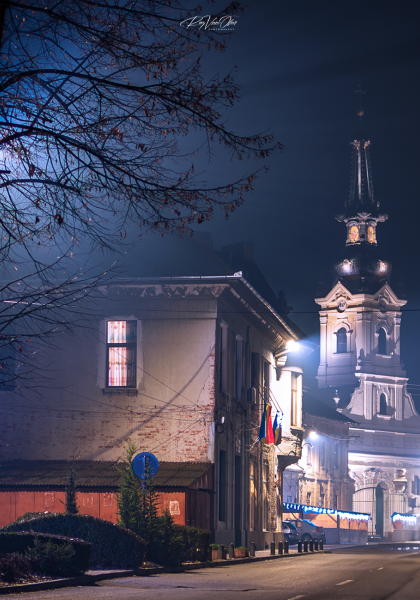Description
The Orthodox Church "Adormirea Maicii Domnului" (The Assumption of the Virgin Mary), whose construction, according to tradition, was also supported by Basarab I, the ruler of Wallachia.
The existence of an Orthodox church in Lipova is mentioned since the time of Louis the Great (1342–1382). In 1427, the existence of a Greek-Orthodox church is mentioned.
Dating from the 14th century, the church in Lipova is contemporary with the first ecclesiastical monuments in Wallachia, such as Tismana, Cozia, and others.
The „Assumption of the Virgin Mary” Orthodox Church is a masterpiece of Romanian feudal art. Built in three stages, it was enriched in the 14th century (around 1338) with the pronaos and about half of the current nave, in Byzantine style, as far as it is known at the expense of Roman nobles from the Mureș valley and maybe - according to tradition - even to Basarab the 1st, lord of Wallachia. The powerful Romanian community from Lipova, investing considerable sums, in 1797 extended church until it took its current form. In 1928, the galleries inside were added. At the end of the 18th century, the exterior of the church, and especially the tower, were impregnated with elements of the baroque and rococo style.
The church also holds exceptional artistic values, created in several stages. The frescoes in the old nave, located near the entrance, were dated by Nicolae Iorga around the year 1500 and show affinities with those at the Viforța Monastery (15th century) in Wallachia. In 1732, most of the walls, both inside and outside, were covered with the splendid frescoes of the painter Nedelcu, created in the Byzantine style. The exterior was covered with plaster and was partially uncovered starting in 1928, along with the ancient "Eternity" gate. Among these frescoes, "The Last Judgment" and "The Patriarchs Abraham, Isaac, and Jacob" stand out. Some of the paintings on the iconostasis belong to Pocroniu (18th century), such as the four evangelists and the Annunciation on the royal doors. The most significant works were done by Ștefan Tenețchi-Ponorechiu, including "St. John the Baptist," painted in 1785. The rest belong to a later stage of the painter's activity, such as "The Last Supper," "Hierarch Nicholas," and others. A special interest is the beautifully carved episcopal throne, brought from Moldavia. The Orthodox Church in Lipova served as the cathedral for several bishops during the 15th to 17th centuries (1408, 1563, 1606, 1651, etc.). In recent years, the church has been restored, and the paintings have been preserved (11.07.2017-30.12.2024).
Address
str. 9 Mai nr. 2, Lipova,
Lipova



